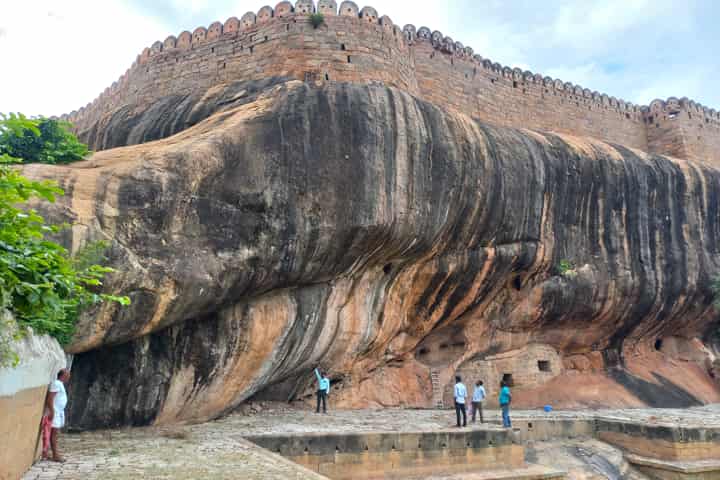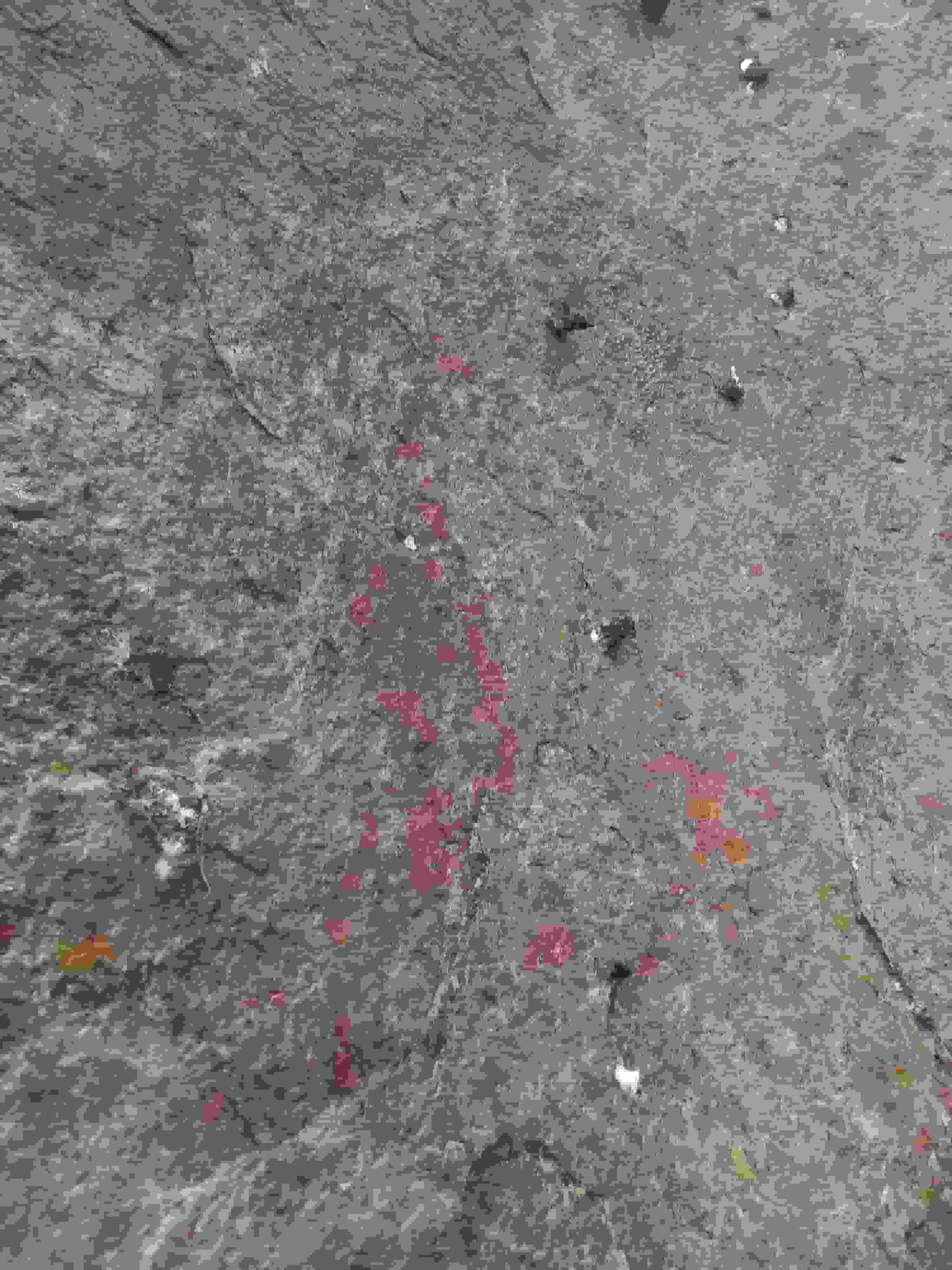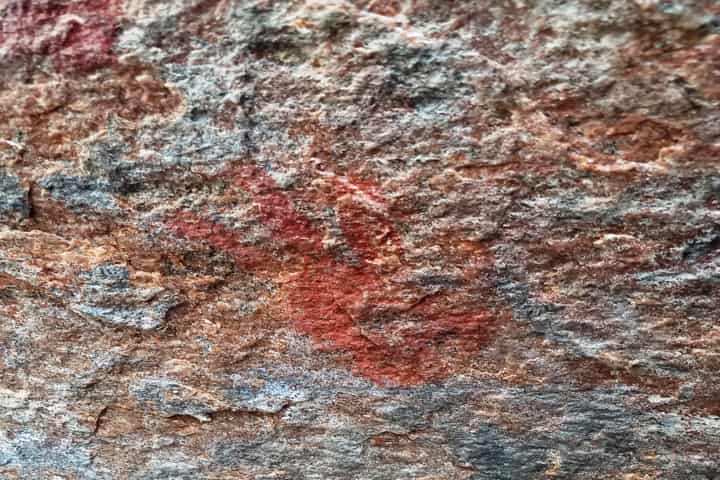Human beings as food gatherers and hunters took refuge in natural caves for safety and these provide a lot of information about their life and culture. One such ancient abode of prehistoric people has been found in the hillock located in Thirumayam, a place of historical importance, 22 kilometres from Pudukkottai in Tamil Nadu.
Sharing details about their find, Dr. J. Raja Mohamad, former curator of Pudukkottai Museum and President Pudukkottai Historical and Cultural Research Centre who led a team during the field study told India Narrative that at the top of the hillock there is a 17th Century fort while Shiva and Vishnu cave temples belonging to the 9th Century are on its southern side. The caverns are adjoining the tank of the Shiva cave temple.

Presence of prehistoric humans was found in the second cavern which is located at a slightly higher level from the ground and its interior can accommodate a few people. Mohamad revealed to India Narrative that “in the ceiling of this cavern we found ancient rock art paintings, in red colour (red ochre). A large part of the paintings has faded and defaced. From the available good portion, we could identify some human figures and impressions of human hands. Some of the imprints of hands are in good state of preservation. The impression (stencil) of the hand may be that of the painter himself as a record and memory or a sign of black magic according to some.”
He added that such hand figures have been found in the early caverns in France, Spain and Indonesia which date back to about 40,000 years. In Tamil Nadu they have been discovered in the rock art panel at Sethavarai in Villupuram district and also at Thirumayam itself in another site.
Incidentally, in 2001 Mohamad had found in the same hillock a panel of rock art paintings. “We found human figures, birds, animals and hands there. The present paintings under discussion are also in the same colour and style,” he disclosed to India Narrative.
According to Mohamad with this discovery “Pudukkottai district has been included in the rock art map of Tamil Nadu. The paintings of similar style found elsewhere in Tamil Nadu have been dated (minimum) to 2500-3000 B.C. Hence the present panel may also be said to belong to this period.”
The first cavern which is from west to east has its interiors filled with debris while the third one which is fairly bigger in size has its entrance closed with masonry work. The fourth one at the eastern end is also closed.

Mohamad feels that the first cavern, nearer to the tank of the Siva cave temple, has been filled with soil in the interior to strengthen the shore of the tank.
Expressing his views about the closed caverns to India Narrative, Mohamad said: “In the closed caverns, the third and fourth, the third one being fairly large may also contain similar paintings inside. Efforts are being made to get them open for study.”
The other members of the team who accompanied Mohamad on the field study were V. Muthu Kumar, Assistant Archaeologist, Archeological Survey of India and G. Karunakaran, Research Scholar, Tamil University.




















